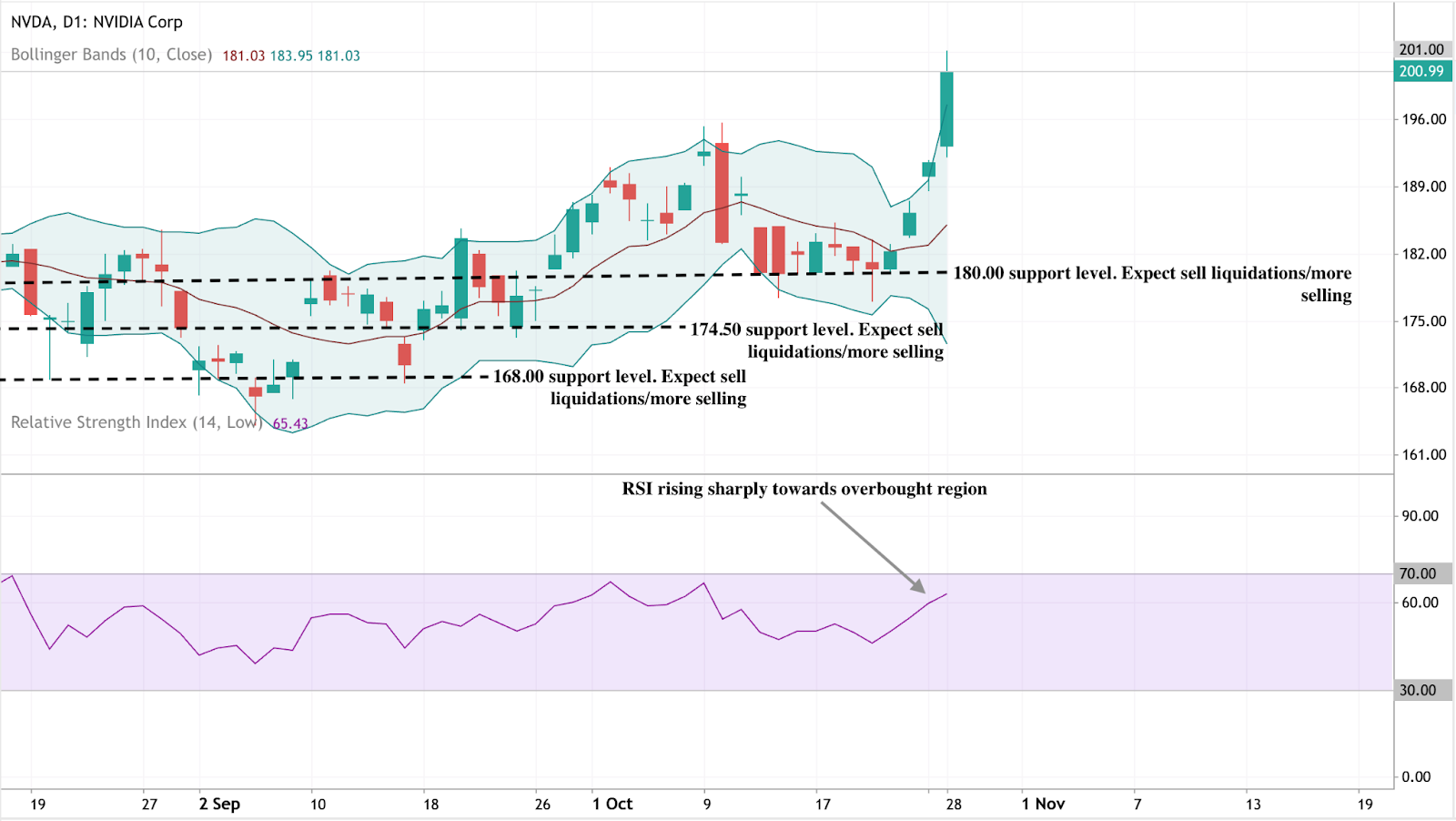Nvidia vs Microsoft: The 2026 battle for AI market leadership
Nvidia vs Microsoft: The 2026 battle for AI market leadership
Nvidia vs Microsoft: The 2026 battle for AI market leadership

Nvidia is on track to overtake Microsoft in market valuation by 2026 - potentially becoming the first company to almost reach a $5 trillion market cap. Its unmatched earnings growth, heavy AI infrastructure investment, and expansion into telecom and networking technology give it a notable edge.
Microsoft, however, remains a powerful contender. Its AI integration across productivity tools, cloud computing, and gaming continues to generate strong, recurring revenues. The next two years will reveal which model - Nvidia’s fast-scaling hardware business or Microsoft’s diversified software ecosystem - proves more durable.
Key takeaways
- Nvidia’s value surged by $230 billion in a single day, bringing it within 3% of the $5 trillion threshold.
- The stock closed at $201.03, up 5%, and is testing the $210 level amid optimism around AI infrastructure growth.
- A new $1 billion partnership with Nokia aims to power AI-based 5G and 6G networks, extending Nvidia’s footprint beyond data centres.
- Microsoft continues to deepen AI adoption through Azure, OpenAI integrations, and its Activision-Blizzard gaming expansion.
- Analysts project $4.51 EPS in 2026 and $6.43 in 2027 for Nvidia, with a P/E ratio near 28.7, still reasonable given its growth rate.
- Both companies could surpass $5 trillion before 2026, though Nvidia’s pure AI focus makes it more exposed to market shifts in the AI cycle.
Nvidia - Nokia partnership: Nvidia’s $230 billion day
Nvidia’s late-October rally, which added over $230 billion to its market value, signalled a turning point in the AI sector.

The gains came after the company’s GTC Washington conference, where several new AI partnerships were revealed. The standout announcement was a $1 billion investment in Nokia to integrate AI-RAN technology into next-generation mobile networks.
This move expands Nvidia’s influence from data processing to communication infrastructure, mirroring its strategy in cloud computing - controlling both the hardware and the AI software stack.
Traders can follow Nvidia’s price action and volatility through CFDs on Deriv MT5, where major technology stocks remain actively traded.
Race to $5 trillion AI market cap: Nvidia vs Microsoft’s stability
The two companies are following sharply different paths toward AI dominance:
- Nvidia’s momentum-driven model: Propelled by record GPU demand, accelerated computing, and deals with top AI firms such as OpenAI, Meta, AWS, and Oracle.
- Microsoft’s diversified model: Built on recurring revenue from Azure, Microsoft 365, and its gaming ecosystem, with AI embedded across all services.
At current valuations, both are closing in on $5 trillion. Nvidia’s explosive profit growth - $86.6 billion in the last 12 months - gives it short-term acceleration, while Microsoft’s steady cash flow provides long-term resilience against potential slowdowns in AI spending.
AI expansion through strategic partnerships
Nvidia has become a core player in global AI development through targeted investments across the value chain:
- $100 billion commitment with OpenAI to deploy 10 gigawatts of Nvidia systems for next-generation AI models.
- $5 billion investment in Intel for joint chip and data centre innovation.
- $1 billion in Nokia, advancing AI-driven telecom networks.
These deals strengthen Nvidia’s position as an AI infrastructure leader, diversifying its reach far beyond GPUs and into cloud and communication systems - much like Microsoft’s evolution from software to cloud dominance in the past decade.
Nvidia & Microsoft Earnings and Valuation Outlook 2026
Nvidia’s financials remain supported by robust fundamentals:
- FY2026 EPS: $4.51
- FY2027 EPS: $6.43
- Forward P/E: 28–30, assuming prices hold near $200.
For Microsoft, analysts project steady double-digit earnings growth, powered by the expansion of Azure and monetisation of AI products like Copilot and GitHub AI.
If current forecasts hold, Nvidia could breach $5 trillion in value by mid-2026, while Microsoft’s steady growth trajectory might take it there slightly later.
Market drivers and risks ahead
AI investment is entering a capital-intensive phase, with cloud providers scaling up infrastructure - a direct tailwind for Nvidia’s business.
Key risks include:
- A potential pullback in corporate AI budgets amid tighter monetary policy.
- Competitive advances from AMD or in-house chips from large hyperscalers.
- Regulatory constraints affecting AI deployment speed.
For Microsoft, the challenge lies in how quickly it can monetise AI at scale through its existing platforms.
Traders can use Deriv’s trading calculator to evaluate exposure to volatile AI-focused equities.
Nvidia technical insights

Nvidia trades around $201, sitting above the upper Bollinger Band, reflecting strong bullish momentum. This level often precedes consolidation, suggesting a short-term cooling phase may follow.
The RSI is around 65, nearing the overbought zone (70+), hinting that sentiment remains positive but vulnerable to short-term profit-taking. Support levels are at $180, $174.50, and $168, areas where traders may watch for renewed buying interest if the stock dips. As long as it stays above $180, the broader uptrend remains intact.
Nvidia investment implications
The next phase of AI growth will depend on how effectively companies turn innovation into earnings. Nvidia’s rapid valuation rise showcases its pivotal role in the infrastructure powering AI adoption, while Microsoft’s balance of diversification and steady returns positions it for durable leadership.
By 2026, the real question may not be who reaches $5 trillion first, but who can sustain it through the next wave of AI competition.
The performance figures quoted are not a guarantee of future performance.















